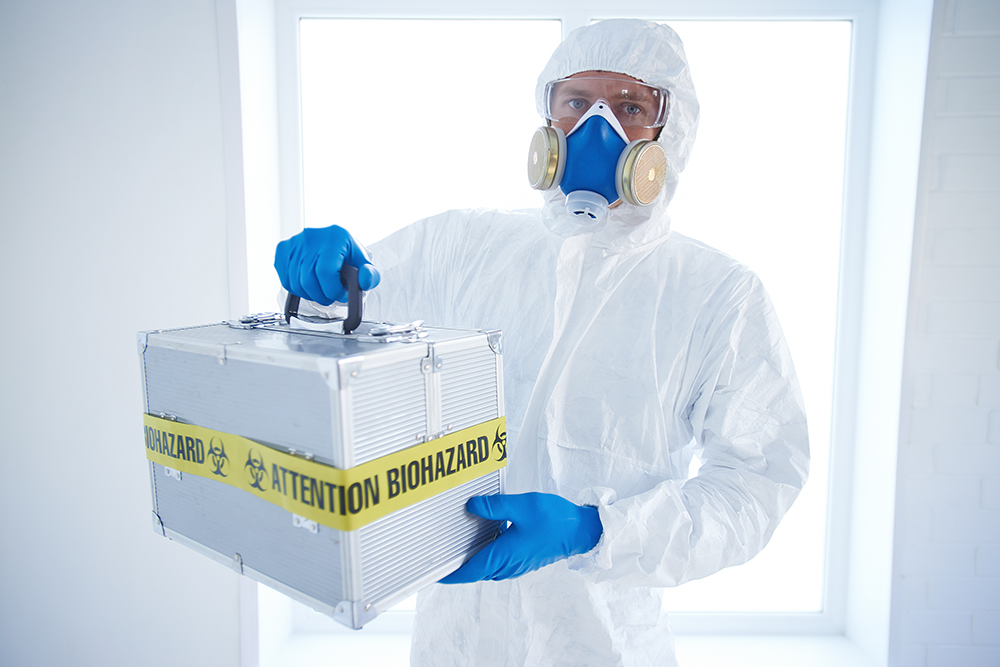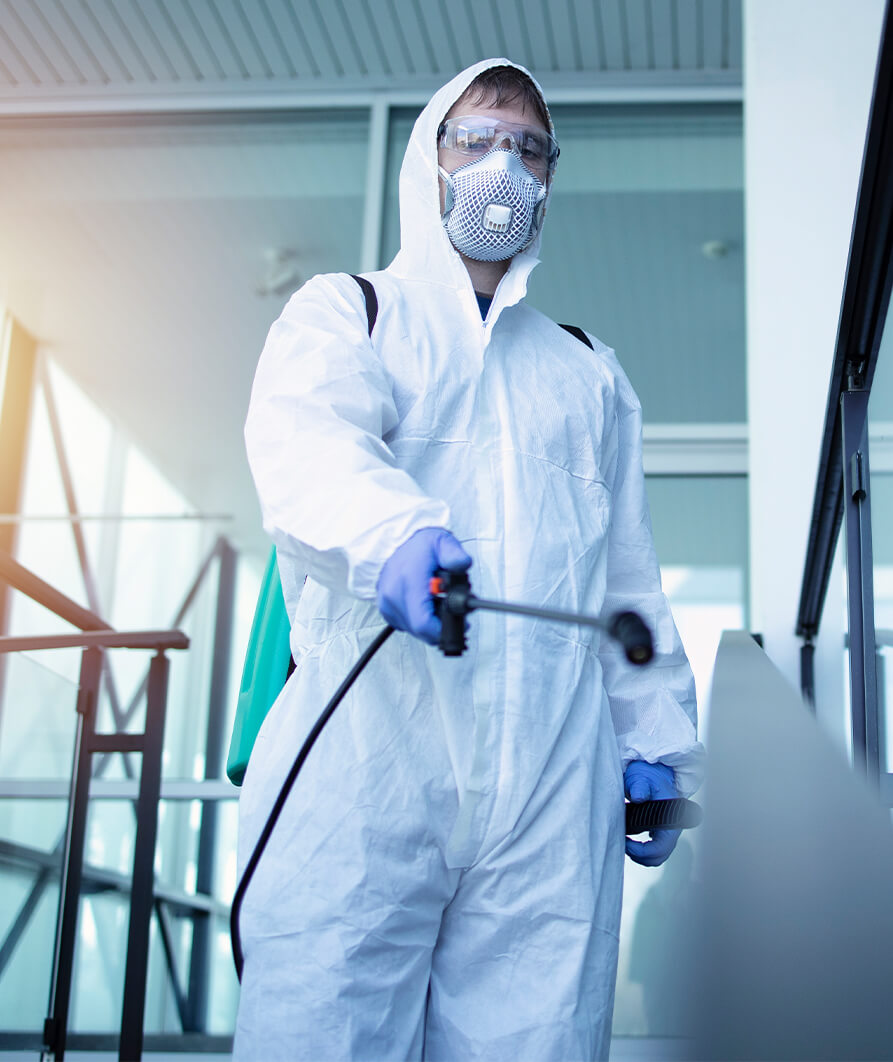Specialist Biohazard Cleansing and Purification for Blood, Bodily Fluids, and Hazardous Products
The prospective wellness risks connected with direct exposure to biohazards emphasize the critical requirement for careful handling and comprehensive clean-up. As we browse the elaborate landscape of biohazard cleaning, understanding the nuances of guidelines, conformity, and the specific equipment at play comes to be necessary in ensuring a extensive and risk-free decontamination process.
Wellness Dangers of Biohazard Direct Exposure
Exposure to biohazards presents substantial wellness risks that can cause extreme consequences for people and areas alike. Biohazards include a wide variety of organic compounds, consisting of blood, bodily fluids, mold, bacteria, viruses, and other potentially infectious materials. When people come right into call with these biohazards, whether through mishaps, inappropriate handling, or ecological direct exposure, they encounter the threat of contracting major health problems or diseases.
One of the main health and wellness threats related to biohazard direct exposure is the transmission of transmittable conditions. Bloodborne microorganisms such as HIV, liver disease B and C, and various bacteria can be present in biohazardous materials, presenting a straight danger to human health and wellness. Breathing in airborne biohazards like mold and mildew spores or entering contact with polluted surfaces can additionally bring about breathing problems, allergies, and various other unfavorable health results.
In addition, biohazard direct exposure can have long-lasting health implications, with some conditions showing up years after the preliminary call (Blood Cleanup). As a result, it is important to prioritize appropriate biohazard cleansing and purification to reduce these health dangers and guarantee the safety and security of individuals and communities

Specialized Training for Biohazard Clean-up
When it involves dealing with biohazard clean-up successfully and safely, specialized training plays a basic role in making certain proper purification procedures are complied with. Biohazard cleaning requires particular understanding and skills to successfully mitigate threats related to bloodborne pathogens, bodily fluids, and harmful products. Specialists educated in biohazard cleaning undergo rigorous direction on exactly how to safely manage, eliminate, and get rid of biohazardous products to stop contamination and exposure.
Specialized training for biohazard clean-up covers a variety of vital subjects, consisting of proper personal protective tools (PPE) use, bloodborne microorganism understanding, decontamination strategies, and unsafe waste disposal protocols. People trained in biohazard clean-up are outfitted with the essential knowledge to evaluate contamination levels, recognize possible hazards, and execute suitable clean-up treatments in conformity with regulative requirements.
Continuous training and education and learning are vital in the area of biohazard clean-up to remain upgraded on the most recent purification modern technologies, safety methods, and policies. By purchasing specialized training, biohazard cleaning experts can effectively react to emergency situation clean-up situations and safeguard both public wellness and the atmosphere.
Importance of Correct Decontamination Strategies
Using correct purification methods is vital in biohazard clean-up to efficiently reduce and remove harmful materials health and wellness risks. Efficient decontamination not just ensures the elimination of noticeable traces of blood, bodily liquids, and various other biohazards but likewise targets invisible virus that may pose severe health risks otherwise correctly gotten rid of. By complying with rigorous decontamination procedures, trained specialists can significantly decrease the risk of direct exposure to dangerous microbes, viruses, and microorganisms that can lead to conditions or infections.
Correct decontamination techniques include making use of specific equipment and anti-bacterials that are specifically designed to neutralize biohazards successfully. Thorough cleaning and disinfection of polluted areas are necessary to prevent the spread of microorganisms and ensure a risk-free setting for owners. Additionally, the correct disposal of biohazardous waste following decontamination procedures is crucial in preventing contamination of other surfaces or people.

Devices and Tools for Safe Cleanup
The appropriate devices and devices play an essential function in guaranteeing the risk-free and efficient clean-up of biohazardous materials. When managing blood, physical fluids, or hazardous products, biohazard cleaning professionals count on specialized gear to decrease direct exposure risks and extensively decontaminate the damaged area. Personal safety equipment (PPE) such as handwear covers, goggles, coveralls, and masks are important to shield against straight contact with possibly infectious products. Furthermore, biohazard cleansing sets including disinfectants, absorbing materials, and biohazard bags are used to safely dispose and contain of infected products. Blood Cleanup.
Advanced cleaning devices like hospital-grade anti-bacterials, HEPA-filtered vacuum cleaners, and misting devices are employed to disinfect surfaces and eliminate biohazards properly. Specialized equipment such as sharps containers and biohazard waste disposal bins are used to safely manage sharp objects and biohazardous waste products. By utilizing the right tools and devices, biohazard cleaning experts can make certain a detailed clean-up procedure that prioritizes safety and security and lessens wellness threats for both employees and owners of the damaged area.
Regulations and Conformity in Biohazard Cleaning
Appropriate adherence to guidelines and conformity standards is vital in biohazard cleansing to guarantee the security of both employees and the setting. Federal government agencies such as OSHA (Occupational Security and Health And Wellness Management) and the EPA (Environmental Defense Company) have actually established particular guidelines for biohazard cleanup treatments to reduce health dangers and ecological contamination. These regulations cover an array of facets including the handling, transport, and disposal of biohazardous products, in addition to the required training and biohazard cleanup supplies protective tools needed for workers involved in the cleanup process.
Biohazard cleaning business must stay up-to-date with these policies to guarantee that their operations satisfy the required safety and security criteria. Failure to abide by these guidelines can cause extreme repercussions, consisting of penalties, legal activity, and jeopardizing the wellness of people and the atmosphere. By following rigorous guidelines and compliance procedures, biohazard cleansing companies can effectively minimize dangers and make certain a detailed and risk-free cleanup process for all events included.
Verdict
In final thought, biohazard cleansing and purification require specific training, correct techniques, and adherence to guidelines. Direct exposure to blood, bodily liquids, and unsafe products presents significant health threats, making it important to use the appropriate tools and tools for risk-free cleanup. By complying with rigorous procedures and guidelines, experts can efficiently alleviate the dangers connected with biohazard direct exposure and make sure the safety of both themselves and others.
As we browse the intricate landscape of biohazard cleaning, understanding the subtleties of guidelines, conformity, and the specific tools at play comes to be important in ensuring a secure and detailed purification procedure. (Blood Cleanup)
When it comes to dealing with biohazard cleaning efficiently and securely, specialized training plays an essential duty in guaranteeing correct decontamination treatments are followed.Utilizing proper purification Visit Website strategies is crucial in biohazard cleaning to effectively eliminate unsafe materials and lessen health risks. Furthermore, biohazard cleansing packages including disinfectants, absorbing products, and biohazard bags are used to safely dispose and include of contaminated things.
Federal government companies such dig this as OSHA (Occupational Safety and Wellness Management) and the EPA (Environmental Protection Firm) have actually established details guidelines for biohazard clean-up procedures to minimize wellness dangers and environmental contamination.